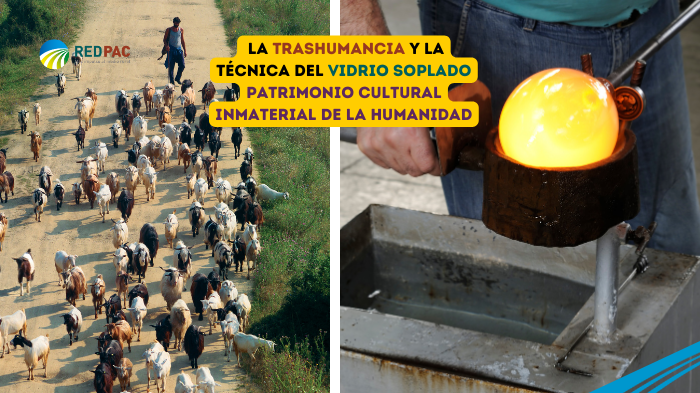
13 de December de 2023
Dinamización rural
The international application for transhumance, which was led by Spain, also recognizes this type of pastoralism in Albania, Andorra, Croatia, France, Luxembourg, and Romania, adding to the recognition already enjoyed in Austria, Greece, and Italy.
- Spain led the international transhumance candidacy, which now includes 10 European countries.
- The technique of glass blowing is also recognized as Intangible Cultural Heritage of Humanity.
Transhumance has shaped the traditional way of life of many societies in Spain and Europe since ancient times. Strictly speaking, transhumance is the seasonal movement of livestock following established routes, exploiting natural pastures year-round. As a result, it has left its mark on the landscape and the people of its territories.
This is why transhumance—along with glassblowing in Spain—has become part of the Intangible Cultural Heritage of Humanity . This was decided by the UNESCO Committee meeting in Kasene (Botswana) on December 6, according to the Ministry of Culture .
The international candidacy for transhumance, which was led by Spain , also recognizes this type of pastoralism in Albania, Andorra, Croatia, France, Luxembourg, and Romania, countries that join the recognition already enjoyed in Austria, Greece, and Italy.
History and culture
Spain has 125,000 kilometers of livestock trails covering the entire peninsula and islands, demonstrating that transhumance is a widespread practice throughout all autonomous communities and is still in use today. Thus, the seasonal movement of herds remains a common practice that has given rise to a rich cultural heritage.
In fact, at a historical level, oral tradition, craftsmanship , and herding techniques, as well as the management of pastures within the framework of customary law , are the elements that formed a transhumant culture that helped, and still helps, transmit the passage and the trails along the peninsular routes.
More information about intangible cultural heritage in Spain can be found at this link .
Glassblowing technique
Likewise, the technique of glass blowing in Spain has been inscribed on the List of Representative Manifestations of Intangible Cultural Heritage. UNESCO as part of the international candidacy shared with the Czech Republic, Finland, France, Germany and Hungary, which recognizes the knowledge, artisanal techniques and skills in glassmaking.
Specifically, the technique of glassblowing is a skill linked to Spanish culture, with large production centers that have been in existence for more than three centuries, such as the National Glass Center of La Granja , in Segovia, or Gordiola Glass, in Mallorca.
In addition, there are nearly 140 artisan and artist workshops throughout the country, sometimes linked to museums, "seeking to revitalize and give visibility to the characteristic productions of now-defunct centers."
The processes of glassblowing, its knowledge, products, associated instruments and machinery, as well as its architectural spaces, present a set of historical, intangible, technological, and artistic values that deserve to be preserved.









